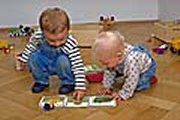





Posted March 16, 2022.
Interest in moral development was ignited in the mid-1960s at a time when major moral issues,including the civil rights movement, the Vietnam War and the women’s movement were the focus of public attention. Topical contemporary issues including international terrorism, the exploitation of expense payments by politicians in the UK, the global banking crisis, insider trading fraud and product safety issues, to name just a few, all highlighted attention being focused on moral reasoning and moral behavior. Doylea: Education level & moral reasoning 2013
More issues were added in the 1980s and 2021, such as disagreements that lacked civility, discipline and good thinking. Friends and relatives argued and disagreed about political issues, racism, education, health care, gun control, social justice and COVID-19 control. These ended in inability to communicate, misinformation, distrust and loss of friendships. Although people discuss and argue about many sensitive issues, their thinking and reasoning has been on different levels.
This article summarizes research about how people think, understand and reason on lower and higher level? Numerous researchers have studied this phenomenon.
Elaine Doylea and Joanne O'Flaherty, in studying the Irish educational system, concluded that: "Moral reasoning is one of the components necessary for moral behavior according to the four-component model outlined by James Rest in 1983.
James Rest contended that moral reasoning increases with age and education. He assured us that we now have usable, reliable ways of assessing an individual's moral judgment development level. There is evidence for accepting a developmental sequence in moral judgment, from low stage thinking to higher stage thinking. Rest: moral judgment research 1980 Rest's conclusions come in large part from Lawrence Kohlberg's studies on morality in the late 1960s. Kohlberg’s theory of moral development is based on concepts of social cooperation and justice:
Kohlberg: video 6 stages of Moral Development; Length = 6:15 mns.
Kohlberg envisioned six stages of development, with stage four also possibly having stage 4.5. Sorochan: Kohlberg moral stages
 |
 |
 |
 |
 |
 |
|
|
|
|
|
|
|
|
|
Legend: Black Face [bottom row] & color number= stage level. e.g. Yellow face & # 1 = stage 1; Orange face & #2 = stage 2 and so on.
Click on image to view features of a stage:
 Click to view Stage 1 |
 Click to view Stage 2 |
 Click to view Stage 3 |
 Click to view Stage 4 |
 Click to view Stage 4.5 |
 Click to view Stage 5 |
 Click to view Stage 6 |
Kohlberg's Research model: Kohlberg: Child as moral philosopher 1968
Method: Kohlberg conducted a longitudinal study over a period of 12 years. During this time in order to test moral reasoning he gave 75 young American males a series of hypothetical and philosophical moral dilemmas in the form of short stories. The participants were aged 10-16 years old at the start of the study and were aged 22-28 by the end. Kohlberg compared the males from the USA to those from Canada, the UK, Mexico, Turkey and Taiwan. Examples of the moral dilemmas included for 10 year olds: “Is it better to save the life of one important person or a lot of unimportant people?” and at ages 13, 16, 20 and 24: “Should the doctor ‘mercy kill’ a fatally ill woman requesting death because of her pain?”
Results: Participants progressed through the stages as they got older. Some participants had not reached the final stage of moral development by the end of the study. At around 50% of each of the six stages, a participant’s thinking was at a single stage, regardless of the moral dilemma involved. Stages were always passed through stage by stage and in the fixed order and the participants never went back to a previous stage. For example, no stage 4 adults had previously been through Stage 6, but all Stage 6 adults had passed through at least Stage 4. Kohlberg also found when children are confronted with the views of a child one stage further along, they seemed to prefer this next stage and to move forward.
The following cross-cultural findings were observed: Taiwanese boys aged 10-13 tended to give ‘classic’ Stage-2 responses. Middle-class urban boys aged 10 in the USA, Taiwan and Mexico showed the order of each stage to be the same as the order of its difficulty or maturity. 16 year old Americans had rarely advanced to stage 6 and at age 13 stage 3 had not been used. At the age of 16, Stage 5 thinking was more prevalent in the USA than either Mexico or Taiwan – this stage was reached by participants in these two countries at a later age.
Middle-class children were found to be more advanced in moral judgment than matched lower-class children. No significant differences were found in the development of moral thinking between Catholics, Protestants, Jews, Buddhists, Muslims or atheists.
Level of functionality and reasoning: Kohlberg's stages of morality point out that people function at a certain moral-educational level. Their level limits their ability to understand complex and higher issues and ideas. Nowadays only a small percentage of people achieve the highest stage.
Other researchers support the previous researchers conclusion that how people think is determined by their level of education and stage of morality. Sarat points out that the way people think about politics exerts a direct and important influence on the way they make decisions. Sarat: Reasoning in politics 1975
Adam Harris's survey poll in 2018 showed a link between morality and education; that America is divided by education: The gulf between the party identification of white voters with college degrees and those without is growing rapidly. President Trump widened it. According to Adam Harris and exit polls, 61 percent of non-college-educated white voters cast their ballots for Republicans while just 45 percent of college-educated white voters did so. Meanwhile 53 percent of college-educated white voters cast their votes for Democrats compared with 37 percent of those without a degree. The diploma divide, as it’s often called, is not occurring across the electorate; it is primarily a phenomenon among white voters. Harris: 2018
Sniderman studied the structure of policy reasoning among citizens at large, and particularly how this structure varies with the level of education. To answer this question, Sniderman examined the nature of policy reasoning on the issue of racial equality. His analysis helps explain why the highly educated show greater support for the principle of racial equality than do the less educated but not appreciably greater support for government efforts to promote it. He argues that highly educated citizens have more fully integrated and differentiated belief systems, and thus they take a wider range of factors into account when evaluating government policy." Sniderman: Reasoning & political values 1984
Sylvester concluded that there has been substantial disagreement about COVID-19 since the outbreak began in the United States among politicians and health experts due to misinformation. The downplaying of the virus by politicians has public health implications and politicizes the issue, making it more difficult to control the virus." Sylvester: COVID-19 & reasoning 2021
According to the Zimmerman and coauthors: “Because education develops one’s ability to gather and interpret information and to solve problems on many levels, it increases one’s potential to control events and outcomes in life. Moreover, through education one encounters and solves problems that are progressively more difficult, complex, and subtle, which builds problem-solving skills and confidence in the ability to solve problems.” Zimmerman: Relationship between education and health 2014
Bebeau and Thoma reported in 2003 that the level of formal education accounts for 30 to 50% of the variance in moral reasoning, making it the most significant variable with respect to enhancing moral reasoning development." Doylea: Education level & moral reasoning 2013
Sniderman examined the nature of policy reasoning among citizens at large on the issue of racial equality in 1984. His analysis helps explain why the highly educated show greater support for the principle of racial equality than do the less educated but not appreciably greater support for government efforts to promote it. He argued that highly educated citizens have more fully integrated and differentiated belief systems, and thus they take a wider range of factors into account when evaluating government policy." Sniderman: Reasoning & political values 1984
What all this research information tells us is that each of us make decisions about understanding complex scientific, social, political and moral issues based upon the level of education and information we have. Unless we continue to learn and get good information, we get stuck at a certain level of understanding, functionality and decision making. A low level of education hinders one's ability to understand complex issues. One functions, understands and makes decisions at the level he/she is in. Although stuck at a certain level, one can move to a higher level with more higher level education.
A example of lack of education and good information about making good moral decisions is adding fluoride to public drinking water. Dentists advocate adding fluoride to drinking water as a way to prevent dental cavities. This may sound like good medical advice but it is a moral public health issue more so than just a dental one. Fluoride is absorbed through the skin, bathing and wearing clothes washed with fluoridated water. Fluoride is a toxic halide that competes with and stops the absorption of iodine in the body. This chemistry information comes from understanding the Periodic Table of Elements. Sorochan: Iodine update 2021
Fluoride easily displaces iodine in the body, a lack of which shuts down production of thyroxine and can lead to hypothyroidism causing dry and premature aged skin, a lowered body temperature and a slower metabolism. Fluoride is not an essential nutrient for body wellbeing, but iodine is a higher essential human body priority. Iodine is essential for every cell in the body but fluoride is not. Understanding this higher level of information is essential to making good decisions about not adding fluoride to drinking water. Persons lacking good chemistry information about iodine and fluoride cannot make sound decisions about adding fluoride to drinking water. And therein is misinformation and the controversy.
My friend, Ableto, who only got a grade eight education, said: "I went to the school of life hard knocks and this is my high level education." He was a wonderful friend who had good values and a fixed way of understanding simple issues but could not reason and understand complex issues.
Conclusion: People function at different moral-educational levels. Their level limits their ability to understand complex higher issues and ideas. This one way to explain differences in interpreting complex issues.
References:
Doylea Elaine and Joanne O'Flaherty, "The impact of education level and type on moral reasoning," Irish Educational Studies, 2013.Vol 32, No 3, 377-393. Doylea: Education level & moral reasoning 2013
Harris Adam , "America is divided by education, "The Atlantic, November 7, 2018. Harris: 2018
Kohlberg Lawrence, "The Child as a Moral Philosopher. Area – Developmental Psychology," 1968. Kohlberg: Child as moral philosopher 1968
People Fit, "Level of work and role complexity." <People fit: level of work
Pennebaker James W. Jeannr Czajka, Russell Cropanzano and Bradford C. Richards, " Levels of thinking," ResearchGate, Deceber, 1990. Pennebaker: Levels of thinking 1990
Rest James R., "Moral Judgment Research and the Cognitive-Developmental Approach to Moral Education," The Personnel and Guidance Journal, May 1980. Rest: moral judgment research 1980
Sarat Austin, "Reasoning in Politics: The social, political and psychological bases of principled thought," American Journal of Political Science, May, 1975. Sarat: Reasoning in politics 1975
Sniderman Paul M. Richard A. Brody and James H. Kuklinski, "Policy Reasoning and Political Values: The Problem of Racial Equality," American Journal of Political Science, February 1, 1984. Sniderman: Reasoning & political values 1984
Sorochan Walter, "Brain & health update," Freegrab.net, October 17, 2021. Sorochan: brain-health 2021
Sorochan Walter, "Iodine update: Deficiencie & dosages, Freegrab.net, Novrmber 2,2021. Sorochan: Iodine update 2021
Sorochan Walter, " Mental-Mind-Brain - How you become who and what you are," Freegrab.net, October 20, 2018. Sorochan: Mind who you are 2018
Sorochan Walter, "Wisdom," Freegrab.net, December 3, 2021. Sorochan: Wisdom 2021
Zimmerman Emily and Steven H. Woolf, "Understanding the Relationship Between Education and Health," National Academy of medicine, June 5, 2014. Zimmerman: Relationship between education and health 2014
International Bureau of Education, Levels of education, IBE: Levels of education
Sylvester Steven M., "COVID-19 and Motivated Reasoning: The Influence of Knowledge on COVID-Related Policy and Health Behavior,"Aocial Science Quarterly, Volume 102, Number 5, September 2021. >Sylvester: COVID-19 & reasoning 2021
Thomas Alice and Glenda Thorne, "How To Increase Higher Level Thinking," The Center for Literacy & Learning. Thomas: Increasing higher learning
Webb Joyce, "7 Signs You Grew Up With Immature Parents — And It's Affecting You Now," YourTango, June 10, 2022. Webb: Immature parents 2022